(This is the second part of the post – How to analyse your customer social profile in 24 hours – Data and Collection) Community Level After collecting the data as described in the previous post, we can look into the data and visualize some aspects of it. There are many questions we can ask of this data,…
Our Thoughts
Social profiles tell us a lot about the interest of its owner and also about people/organisations they follow and people who are following them. This blog post is a summary of what information you can get by collecting and analysing your customer profiles in 24 hours. In fact, after unlocking of the data, this process…
Hadoop is a grassroots phenomenon that emerged in the social networking and consumer Internet world. As always, there are early adopters who take risks on the cutting edge, and there are more conservative organizations watching the pioneers from the sidelines. This played out in 2011 as early customer experiences with Hadoop were shared via conferences,…
With the increasing popularity and the addiction of companies towards Hadoop, also Hadoop being an unanimous solution for Big data platforms makes the Hadoop development team to focus on the current architectural deficiencies and make Hadoop free from such underlying architectural issues. In that path a new Hadoop MapReduce version has taken birth MapReduce 2.0…
Joins:- ======= Joins is one of the interesting features available in MapReduce. Joins performed by Mapper are called as Map-side Joins. Joins performed by Reducer can be treated as Reduce-side joins. Frameworks like Pig, Hive, or Cascading has support for performing joins. Before diving into the implementation let us understand the problem throughly. If we…
Bloom Filter A Bloom filter is a space-efficient probabilistic data structure that is used to efficiently encode sets and perform set membership tests, whether an element is a member of a set. False positives are possible, but false negatives are strictly not possible. i.e. a query returns either “inside set (may be wrong)�? or “definitely…
Clustering Introduction:- Clustering is one of the most popular techniques available in Machine learning field. This allows the system to group numurous entities into separate clusters/groups based on certain characteristics/features of the entities. Clustering is a widely used technique in many grouping problems like grouping similar news articles, blogs, emails, malwares etc based on their…
At Big Data Partnership we love to tell you about what we are up to and what interesting things we’ve seen or heard. But we prefer to hear about the things you have have heard and what you think about Big Data and even Big Data Partnership. Over the coming weeks we will be coming…
© 2023 Big Data Partnership Limited. All Rights Reserved.
Big Data Partnership Limited is a company registered in England & Wales with Company No 7904824
Registered Office: Finsgate, 5-7 Cranwood Street, London, EC1V 9EE
Terms of Use | Privacy Policy


